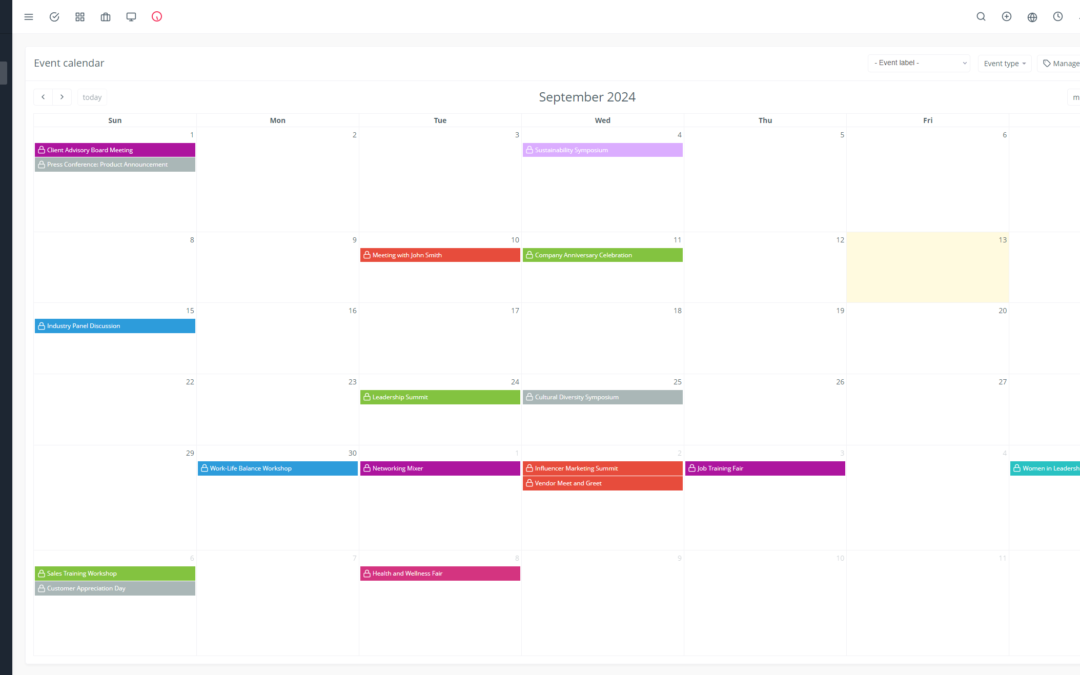Selecting a CRM (Customer Relationship Management) API is a strategic decision for any business looking to optimize customer interactions and enhance sales performance. 📈
To help you make the right choice, here’s a list of essential criteria to consider when evaluating a CRM API:
1. Ease of Use and Integration:
Intuitive user interface: A clear and user-friendly interface makes it easy to learn and use the API on a daily basis. 💻
Comprehensive and accessible documentation: Thorough, clear, and easy-to-navigate documentation is essential for understanding and effectively using the API. 📚
Integration with other tools and applications: A good CRM API integrates seamlessly with your existing systems (email marketing, social media, etc.) for a smooth and complete experience. 🤝
2. Functionality:
Contact and lead management: Capture, store, and organize customer information efficiently. 📇
Opportunity and sales management: Track sales progress and identify growth opportunities. 📈
Marketing automation: Automate marketing campaigns to save time and optimize your efforts. 🤖
Reporting and analytics: Get actionable insights about your performance and customers. 📊
Customer support: Manage customer requests effectively and enhance customer satisfaction. 📞
3. Reliability and Security:
Availability and performance: The API should be available and reliable, with fast response times. ⏱️
Data security: The security of your customer data is paramount. 🔐
Compliance with regulations: Ensure the API complies with applicable privacy and security standards. 👮♀️
4. Efficiency and Performance:
Speed of request processing: Fast processing times ensure an optimal user experience. ⚡️
Scalability: The API should be able to handle future growth in your needs. 📈
5. Pricing and Costs:
Pricing and licensing model: Compare different pricing and licensing models to find the solution that best suits your budget. 💰
Integration and maintenance costs: Consider the costs associated with integrating and maintaining the API. 🛠️
6. Support and Assistance:
Support team availability: Ensure access to a knowledgeable and responsive support team. 🧑💻
Customer support quality: Look for high-quality and effective customer support. 🏆
Training resources: Training resources help you make the most of the API. 📚
7. Flexibility and Scalability:
Customization options: The API should be customizable to meet your specific needs. ⚙️
Development options: Development options allow you to integrate the API with your own applications. 👩💻
Ability to adapt to changing needs: The API should be able to adapt to evolving needs and strategies. 🔄
8. Regulatory Compliance:
Compliance with laws and regulations: The API should comply with applicable data protection laws and regulations. 👮♀️
Access control and authorization management: Access control and authorization management mechanisms ensure the security of your data. 🔐
9. Automation Capabilities:
Automation of repetitive tasks: Automate manual tasks to save time and improve efficiency. 🤖
Business process automation: Automate business processes for better organization and control. ⚙️
10. Analytics and Reporting:
Advanced reporting and analytics tools: Get actionable insights about your customers and performance. 📊
Customizable dashboards: Visualize key data and track your progress easily. 📈
11. Integration with Sales Channels:
Integration with online and offline channels: Manage your customer interactions across all channels. 💻
Integration with social media: Track and manage your social media interactions. 📱
12. Integration with Marketing Systems:
Integration with email marketing tools: Create personalized and targeted marketing campaigns. 📧
Integration with marketing automation platforms: Automate your marketing campaigns and manage your contacts easily. 🤖
13. Integration with Sales Systems:
Integration with sales management systems: Synchronize your CRM data with your sales systems. 🤝
Integration with e-commerce platforms: Manage your orders and customer relationships directly from your e-commerce platform. 🛒
14. User Experience:
User-friendly interface: An intuitive and easy-to-use interface enhances API adoption by your teams. 💻
Ease of navigation: Simple and intuitive navigation simplifies API usage. 🧭
15. Developer Experience:
Comprehensive API documentation: Comprehensive and easy-to-understand documentation facilitates API integration into your applications. 📚
Code samples and tutorials: Code samples and tutorials speed up the integration and development process. 👩💻
16. Deployment Options Availability:
Cloud hosting: Cloud hosting offers a flexible and scalable solution. ☁️
On-premises hosting: On-premises hosting offers greater control and security. 🖥️
17. Reputation and Reliability:
User and customer reviews: Check user and customer reviews to get an idea of the quality and reliability of the API. 🌟
Successful use cases:* Look for examples of successful use cases to better understand the benefits of the API. 🏆
By considering these essential criteria, you can choose a CRM API that meets your specific needs and helps you improve customer relationships, optimize business processes, and achieve your growth goals. 🚀

